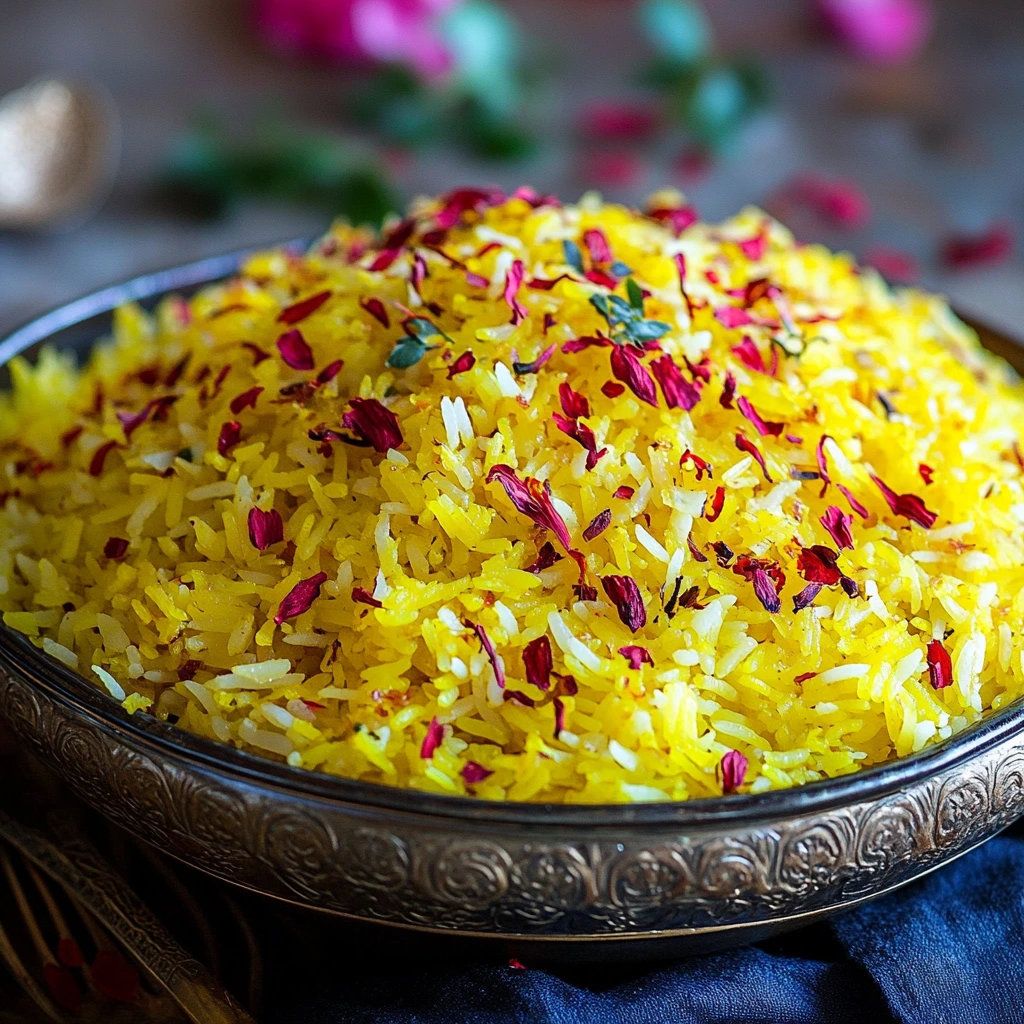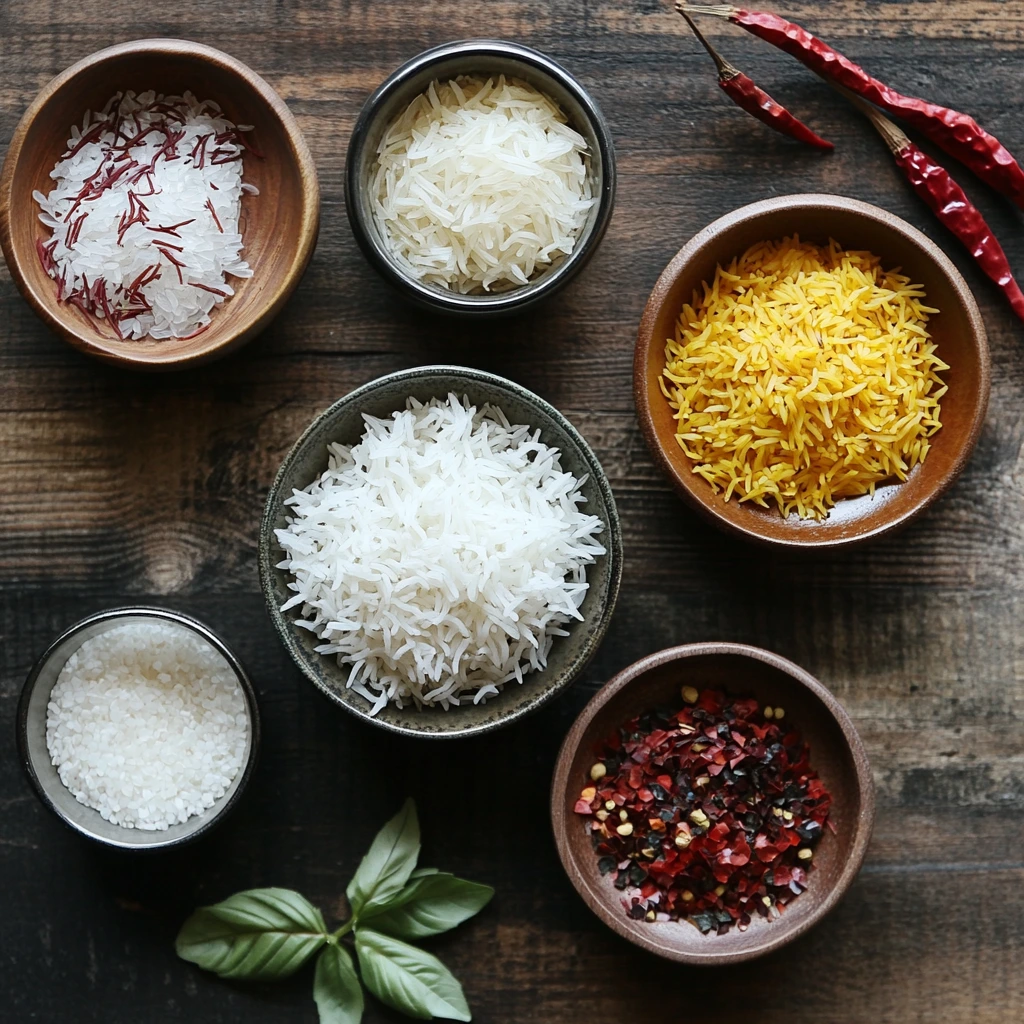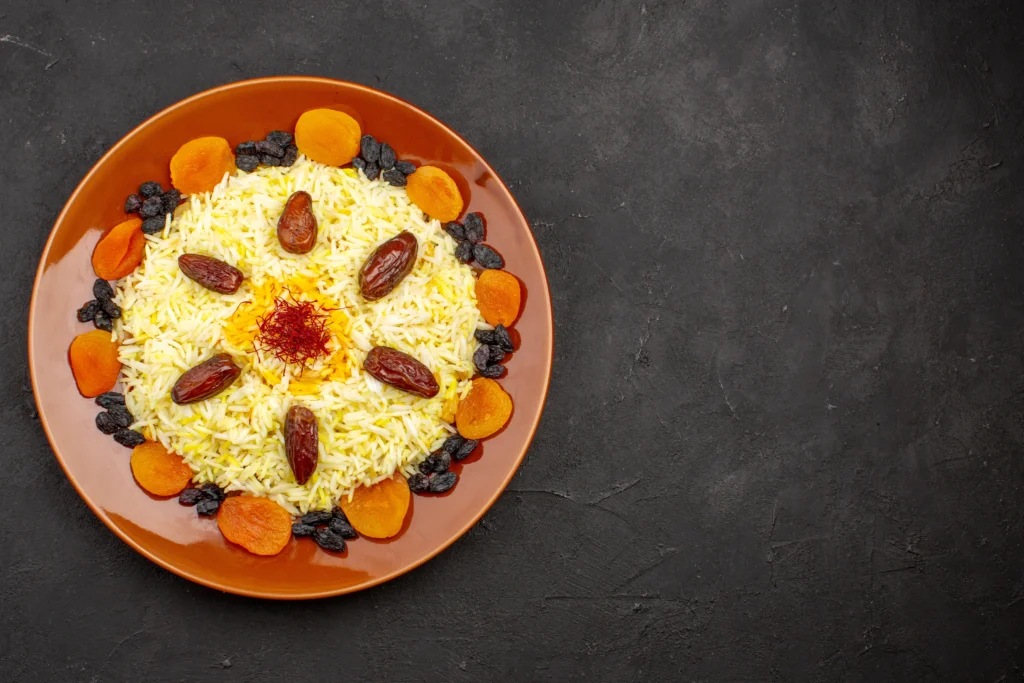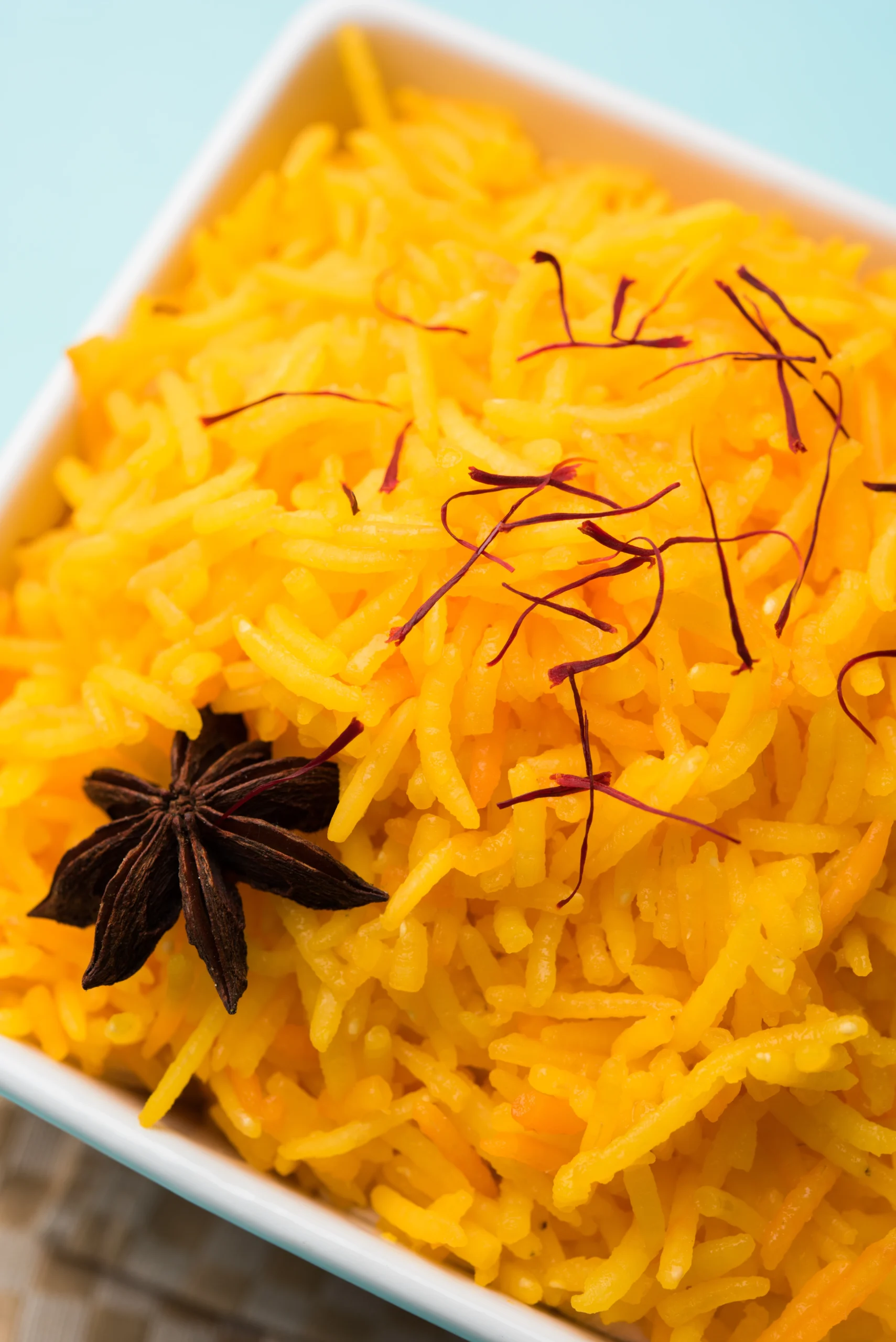There’s something truly magical about the way Persian cuisine transforms simple ingredients into unforgettable dishes—and at the heart of it all is saffron rice. Delicate, fragrant, and beautifully golden, Persian saffron rice isn’t just a staple—it’s a symbol of celebration, hospitality, and culinary artistry. Whether served alongside stews, grilled meats, or as a showstopping centerpiece, this dish captures the essence of Persian cooking: balance, elegance, and a deep respect for tradition.
In this article, we’re taking you into the kitchen to explore the authentic method of preparing saffron rice the way it’s been done for generations. From selecting high-quality saffron to mastering the steam-cooking technique that gives the rice its signature fluffy texture and crispy bottom layer (known as tahdig), we’ll walk you through every step. You’ll learn not only how to cook this dish but also the cultural significance behind it—why it’s served at weddings, family gatherings, and festive occasions, and why it continues to hold a special place on Persian tables around the world.
So, if you’ve ever been captivated by the aroma of saffron or intrigued by the vibrant layers of Persian rice, this recipe is your perfect starting point. Get ready to fill your kitchen with warmth and spice, and discover the secret to rice that’s not only delicious but deeply meaningful.

The Cultural Significance of Persian Saffron Rice
In Persian culture, food is far more than sustenance—it’s a reflection of love, hospitality, artistry, and identity. Among the many exquisite dishes that make up Iranian cuisine, saffron rice (chelow) holds a special place. It is not just a popular staple; it’s a symbol of celebration, pride, and tradition passed down through generations.
From the moment the delicate aroma of saffron fills the kitchen, there’s an air of occasion. This golden rice is often reserved for festive gatherings such as weddings, Nowruz (Persian New Year), and other family celebrations. Its vibrant color and luxurious taste signify wealth, joy, and abundance—core themes in Persian hospitality.
The meticulous process of preparing Persian saffron rice is also deeply cultural. The care taken to wash, soak, and steam the rice to fluffy perfection, and to craft the crisp, golden tahdig at the bottom, reflects values of patience, precision, and respect for tradition. In many households, the honor of making perfect tahdig is a mark of culinary mastery, often associated with cherished family members like mothers or grandmothers.
Moreover, rice itself—especially when infused with saffron—has long been seen as a unifying element across regions of Iran. While ingredients and techniques may vary slightly from one province to another, the essence remains the same: it brings people together. Whether served as a luxurious main dish or a beloved side, saffron rice is a staple that transcends generations and geographies.
In essence, Persian saffron rice isn’t just a dish—it’s a story. It tells of history, heritage, and heartfelt moments shared around the table. By learning to make it, you’re not only recreating a recipe but also honoring a timeless culinary tradition.

Choosing the Right Ingredients
The beauty of Persian saffron rice lies in its simplicity—yet every ingredient plays a crucial role in delivering its signature aroma, texture, and color. Selecting the right elements ensures your dish turns out not only delicious but also true to its roots. Let’s break down the essentials:
Types of Rice: Why Basmati or Persian-Style Long Grain Matters
Not all rice is created equal, especially when it comes to Persian cooking. Long-grain varieties like basmati or Persian-style rice are essential for achieving the ideal texture: fluffy, separate grains that don’t clump together. These types of rice absorb flavors well and hold up beautifully through the parboiling and steaming process. Aged basmati rice is particularly favored for its nutty aroma and firmer texture.
How to Choose and Use Saffron
Saffron is the star of this dish—both in color and aroma. For the best results, choose high-quality, pure Persian saffron threads (avoid powdered or mixed saffron which can be diluted or fake). The key to unlocking its full potential is blooming: grind the threads with a pinch of sugar and steep them in a few tablespoons of hot water. This brings out the vibrant color and releases the rich, earthy aroma that defines the dish.
Butter, Oil, and Optional Add-ins
The fat used in Persian saffron rice contributes to its depth of flavor and the creation of a perfect tahdig (crispy bottom layer). Traditionally, a mix of oil and butter is used. Clarified butter (ghee) can also be used for a richer, nuttier taste. For a vegan option, high-quality vegetable oils work well too. Some recipes include yogurt or egg yolk mixed with rice for an extra-crispy tahdig—a popular and delicious variation.
Optional Enhancements
While the classic version is simple and elegant, saffron rice can be beautifully enhanced for festive occasions. Add-ins like dried barberries (zereshk), slivered almonds, pistachios, or even a touch of rose water can add contrast in flavor, texture, and visual appeal. These additions are often reserved for special meals or celebrations and help turn the dish into a luxurious showpiece.

Step-by-Step Cooking Method
Mastering Persian saffron rice is all about technique. It may take a little patience, but once you get the hang of it, the results are more than worth it. Follow these time-tested steps to get rice that’s light, aromatic, and crowned with the famous golden crust.
1. Rinsing and Soaking the Rice
The first (and most important) step is rinsing the rice thoroughly to remove excess starch. This helps ensure each grain remains separate and doesn’t stick together.
- Place the rice in a large bowl and rinse under cold water several times until the water runs mostly clear.
- Soak the rice in cold water with a generous pinch of salt for at least 30 minutes (ideally up to 2 hours). This step softens the grains and allows for more even cooking.
2. Parboiling to Perfection
Parboiling is the traditional Persian method for preparing rice before steaming. It’s a crucial step for achieving the right texture.
- Bring a large pot of salted water to a rolling boil, just like pasta water.
- Drain the soaked rice and gently add it to the boiling water.
- Boil for about 5–7 minutes, stirring occasionally. The rice should be slightly soft on the outside but still firm in the center.
- Drain the rice using a fine-mesh strainer and rinse briefly with cold water to stop the cooking process.
3. Creating the Saffron Infusion
Now it’s time to prepare your saffron—this is where the magic happens.
- Grind a small pinch of saffron threads using a mortar and pestle, often with a bit of sugar to help break it down.
- Add a few tablespoons of hot (not boiling) water to bloom the saffron. Let it sit for 10–15 minutes. The color and aroma will intensify beautifully.
- This infusion will be used for coloring and flavoring the top layer of the rice or mixed with a portion of the rice for presentation.
4. Steaming and Building the Tahdig
This step transforms the rice into something truly special, with a fluffy body and a crispy, golden base.
- In a heavy-bottomed non-stick or cast iron pot, heat a few tablespoons of oil (or oil and butter).
- For a traditional tahdig, add a thin layer of rice mixed with yogurt and a little saffron, or simply use thin slices of potatoes or flatbread.
- Gently spoon the parboiled rice into the pot, mounding it into a pyramid shape to allow steam to circulate.
- Use the handle of a spoon to poke a few holes down through the rice to the bottom of the pot (this helps the steam escape evenly).
- Drizzle the saffron infusion over the top for color and aroma.
- Wrap the pot lid with a clean kitchen towel or use a damkoni (rice steaming cloth), then place it tightly on the pot.
- Cook on medium heat for 5–7 minutes to create the crust, then reduce to low and steam for 30–40 minutes.
When done, gently loosen the sides of the rice, flip it onto a serving dish to reveal the golden tahdig, and prepare for applause!

Serving and Presentation Tips
Persian saffron rice isn’t just about taste—it’s also a feast for the eyes. Presentation plays a big role in Persian cuisine, where food is often prepared with an artistic touch to reflect the warmth and pride of the cook. Here’s how to serve and showcase your saffron rice beautifully.
1. How to Plate Persian Saffron Rice Beautifully
The most iconic way to serve Persian rice is by gently unmolding it onto a serving platter so that the golden tahdig is revealed in all its crispy glory.
- For molded rice, use a dome-shaped bowl or pot to help shape the rice before inverting it onto the plate.
- Another method is to mound the plain rice in the center of the dish and top it with the saffron-infused portion for a layered color effect—bright yellow on top, white underneath.
- Garnish with a sprinkle of dried barberries (zereshk), slivered almonds, or chopped pistachios for texture and a festive touch.
2. Pairing Suggestions
Persian saffron rice is incredibly versatile and complements a wide variety of main dishes. Here are a few classic pairings:
- Kebabs: Juicy grilled chicken or beef kebabs (like Joojeh Kabab or Kabab Koobideh) are traditional companions.
- Stews (Khoresh): Rich and flavorful stews like Fesenjan (pomegranate and walnut) or Ghormeh Sabzi (herb and kidney bean) are perfect over a bed of saffron rice.
- Grilled Vegetables or Fish: For a lighter option, pair it with herb-marinated grilled veggies or saffron-seasoned fish.
3. Festive Touches for Special Occasions
When preparing saffron rice for a celebration or special dinner, it’s common to elevate it with a few luxurious additions:
- Zereshk Polo: Mix in or layer barberries sautéed with a touch of sugar and butter for a tangy-sweet contrast.
- Nuts and Dried Fruit: Slivered pistachios, almonds, or golden raisins add elegance and texture.
- Rose Water or Orange Blossom Water: A light drizzle of floral water over the rice can add a lovely aromatic note (just don’t overdo it).
These enhancements not only taste great but also help turn a simple rice dish into the centerpiece of your table.
4. Storage and Reheating
If you have leftovers, store them in an airtight container in the fridge for up to 3 days.
- Reheat gently in a non-stick pan to re-crisp the tahdig, or use a steamer or microwave with a damp paper towel to preserve the rice’s moisture.
- To freeze, let the rice cool completely, then store it in freezer-safe bags or containers. Defrost and steam or pan-fry to bring it back to life.

Final Thoughts and Personal Tips
Making authentic Persian saffron rice is a labor of love, but once you master the technique, the rewards are well worth the effort. Whether you’re preparing it for a special occasion or just a comforting meal, this dish never fails to impress. It’s a wonderful way to explore the rich cultural heritage of Persian cuisine and elevate any dining experience.
1. Common Mistakes to Avoid
As with any traditional dish, there are a few common pitfalls to watch out for when making Persian saffron rice:
- Overcooking the Rice: The key to fluffy rice is knowing when to stop boiling. Overcooked rice will lose its texture and become mushy. Parboiling for 5–7 minutes is just enough to soften the grains.
- Not Rinsing the Rice Enough: Rinsing is crucial to remove excess starch. If you skip this step, the rice will clump together and lose its light, fluffy texture.
- Under or Overcooking the Tahdig: Creating that perfect tahdig can take practice. Don’t rush the steaming process. If it’s too crispy, it can burn, and if it’s not crispy enough, it’ll lack the signature golden crunch. Keep an eye on it, and don’t be afraid to lift the lid to check for doneness (just be gentle!).
2. My Favorite Variations
While the classic Persian saffron rice is hard to beat, here are a few variations to try if you’re in the mood for something different:
- Herbed Rice (Sabzi Polo): Add a mix of fresh herbs like dill, parsley, cilantro, and chives to the rice for a fresh, herbaceous flavor. This is often served with fish, especially for Nowruz (Persian New Year).
- Jeweled Rice (Shirin Polow): This version is adorned with dried fruit like raisins, apricots, and orange zest, along with nuts like almonds or pistachios, making it a festive, sweet-savory dish.
- Vegetarian or Vegan Adaptations: If you’re looking for a plant-based option, you can skip the butter and yogurt, using olive oil and a bit of plant-based yogurt instead. You can also serve it with sautéed vegetables or grilled tofu for a satisfying meal.
3. Why This Dish Is Worth the Effort
Saffron rice isn’t just food—it’s an experience. From the first step of rinsing the rice to the moment you uncover the tahdig, this dish connects you to centuries of tradition and culture. The fragrant aroma, the tender texture, and the golden hue all work together to create something special. Whether you’re preparing it for a grand celebration or a cozy dinner, it’s a dish that brings people together and makes every meal feel like an occasion.
I always find that making this dish brings an added level of joy when shared with loved ones—there’s just something about the process that feels like an act of love. So don’t be intimidated by the steps. Once you’ve mastered it, you’ll have a recipe that you can proudly serve for years to come.
4. Encourage Reader Interaction
I’d love to hear about your experiences with making Persian saffron rice! Do you have any tips or personal touches you add to your recipe? Feel free to share your thoughts in the comments below. And if you’ve made this recipe, I’d be thrilled to see how it turned out—don’t forget to tag me on social media and share your photos. Happy cooking!
Table of Contents
Persian Saffron Rice (Tachin) – RecipeTin Eats
Shirazi Salad (1Persian Cucumber Salad) – A Must-Try Mediterranean Dish – labelrecipes.com


1 thought on “Authentic Persian Saffron Rice Recipe: The Secret to Fragrant, Fluffy Rice”